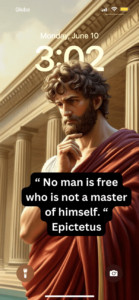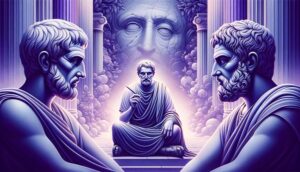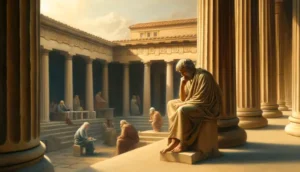Stoicism is an ancient school of philosophy founded by Zeno in Greece in the 3rd century BC. It’s popularly known for giving practicing stoics tranquility and resilience in high-stress situations and is the main influence behind Rational Emotive Behavior Therapy(REBT) designed by Albert Ellis in the 1950s. It is widely used today by modern psychologists to improve mental health.

The study on stoicism can be divided into three frameworks. The most fundamental of these frameworks is the idea of (1) living in accordance with nature. The stoics have a deep belief that the world behaves in a logical way through a series of cause and effect events. This rational coherence works to preserve the entirety of Nature. To live in accordance with Nature is to understand and embrace this fundamental belief which springs the other two frameworks. Since it is the foundation of stoic belief, you can think of it as the base of the pyramid.
The next framework is the idea that (2) virtue is the only absolute good. Just like any other school of philosophy, the stoics believe that virtues alone are enough to achieve happiness. The opposite of virtues are vices and if we choose the latter over the former we will live in chaos. Complacent to the first framework of rationality and order, one must adopt virtues and avoid vices. Virtue is the heart of stoic teaching so you can think of it as the center of the pyramid.
The last framework is actually a (3) set of practices by the stoics that are deeply rooted in the first two frameworks. For example, the idea of “Amor Fati” or in English love your fate stems from that fact that since the world behaves in a rational way for its preservation the stoics believe that our fate has been written in the beginning and therefore we should accept anything that happens to us with love and equanimity because its good for us and for the entirety. As a result? Less anxiety of the future and free of guilt from the past. You cant think of them as applications built on top of two more foundational frameworks at the base of the pyramid.
Remember these 3 frameworks as they are central to the stoics belief and practices. Use this easy handbook to navigate through them. They are structured as a table of contents so you will have a BIG PICTURE as you navigate through the granular concepts. Hover over to a topic and click it. You will be presented with simple explanations on the most important stoics concept along with some of the most important quotes from the ancients stoics about each concept.
Follow us on twitter @modernttimestoic if you found this handbook helpful and let us know if you ever have any feedback.





